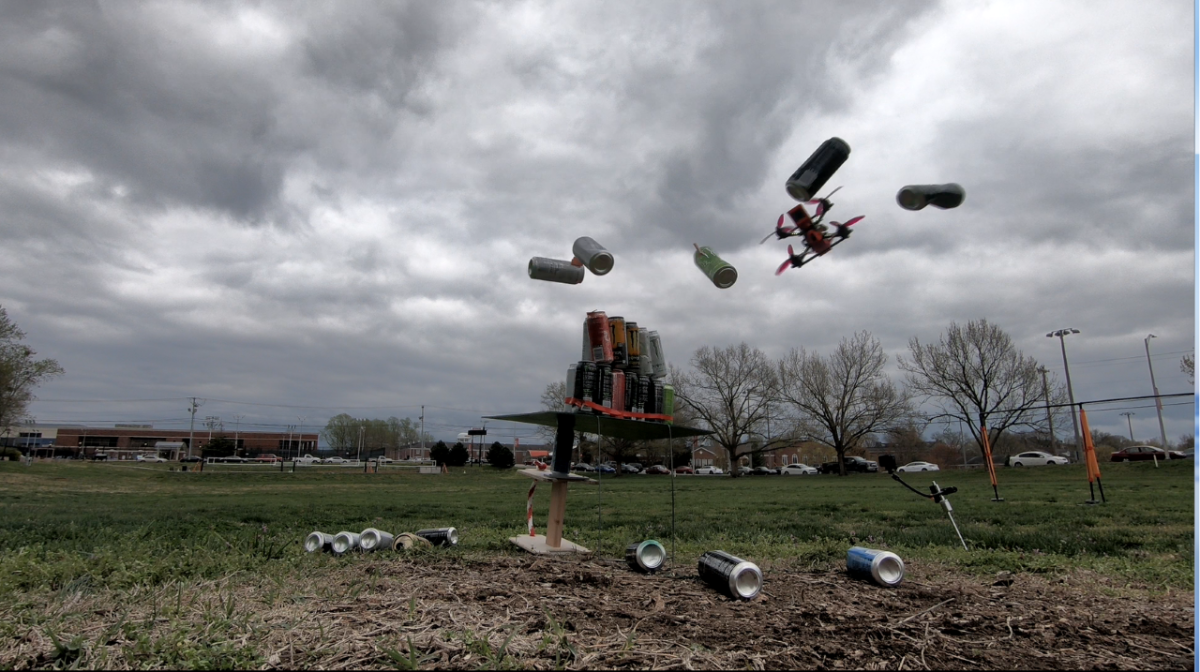The first Five Nights at Freddy’s game came out of nowhere on August 8, 2014, and it engulfed the Internet almost overnight. It’s spawned four games, with a fifth one due next year, and has practically reinvented the horror game genre.
This is because in Five Night at Freddy’s, usually shortened to FNaF, there is an understanding that less is more.
If you haven’t played it yet or watched one of the thousands of YouTubers who have played it, the quick run down is that you are a security guard in a Chuck E. Cheese-esque animatronic pizza restaurant. You goal is to survive until 6 A.M. without any of the animatronic characters getting into your office, and with only doors you can’t keep closed and lights that can die as your only weapons, this is easier said than done.
The game, on the surface, is insanely simple. Your character can’t even move until the 4th FNaF, you can only look left and right and push buttons. Yet, this is considered one of the scariest games of all time. How can something so simple be so terrifying?
To get this answer, let’s look at other genres of horror to compare.
The ‘less is more’ philosophy of horror is definitely nothing new. The entire concept of a found footage film implements this perfectly. In the first “Paranormal Activity” movie, the cameras are generally fixed in one place, and you, the audience, is just waiting for something to come on screen that you can actually see. You know it’s coming, but until you see it, you’re completely in the dark. The same can go for “Unfriended,” where you only get to see what our main character sees on screen.
Withholding information is just as terrifying for the audience as it is for the characters on screen. We want to know what’s going on so we can be prepared for it. But when the movie itself doesn’t allow you this luxury, your fear of the unknown takes over. You become just as helpless as the people you’re watching and are therefore much more emotionally invested.
When a movie like “Silent Hill Revelations” comes along, we get the opposite effect and get a fundamentally flawed movie. The way the movie is staged, the dialogue in place, and the terrible writing don’t leave you feeling scared. “Silent Hill Revelations” tried to throw in a lot more character development, which isn’t normally a problem, but they supplemented building an atmosphere for unnecessary romantic subplots and jumpscares you can see coming from a mile away because of the way the movie is shot. Wow, I wonder why they’re focusing on that toy bunny and not the main character. I wonder if it, oh, I don’t know, will suddenly move?
Five Nights at Freddy’s combines large amounts of environment with small amounts of information given to the player in a way that’s utterly terrifying and, arguably, absolutely genius.
YouTubers like the immensely popular Markiplier describe the feeling of playing the game as you “just sitting [there] and waiting to die.” You only get to know what you can see in your security cameras, which are generally still, blurry images. You don’t get the privilege of seeing the animatronics move, you only get to see where they’ve gone. And where they could go next is entirely up to them. The only control you have is your meager ways to stop them.
The third game has even more fun with this concept of not getting all the information you can by making the one animatronic you encounter incredibly hard to see. He hides in the shadows, so you know even less about where he could be. And a mistake on your part can be fatal.
FNaF generally isn’t a game where you blame the game itself for mistakes. There are plenty of games where you can argue “well, the camera was weird and I couldn’t see where I was going,” or “it never explained I could do that,” or similar complaints. However, in Five Nights at Freddy’s, this feeling rarely arises because you control everything. In its simplicity, there’s not a lot the game itself could mess up. When you die, it’s your fault. You made a mistake because you forgot to close a door, or wind up a music box or check a camera. This provides a unique player-game relationship that makes the game even more terrifying for you, because you know your fate is in your hands.
The Internet famous “Slender” games also had hints of this idea, being about 50/50 when it came to you losing from either your own mistakes or Slenderman just being impossible to avoid at times. The feeling still remained that part of the reason you lost is because it was your fault you didn’t run fast enough to evade him. When a game makes you more of an active participant rather than just a bystander watching these events unfold, the scares are more effective because you know your mistakes can be your downfall.
FNaF has redefined what a game means to be scary. Now it’s not so much the antagonists themselves that are the scariest part, it’s your real fear that you can mess up. It inspires a primal need to survive and a fear that you can’t be good enough. This fundamental understanding of human psychology makes Five Nights at Freddy’s one of the smartest and scariest games of the decade.







